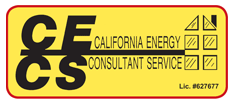Metal is known to get hot. Metal playgrounds, for example, get so hot in the Sacramento sun that they can quite literally burn your skin, even when the ambient heat is manageable. Metal heats up extremely well.
When it comes to metal roofing, a common concern among homeowners is whether it heats up excessively and raises the temperature inside the home. But what many homeowners are shocked to learn is that metal roofing is one of the most energy efficient, effective forms of roofing out there. In this article, we aim to explain why metal roofing is such an energy efficient option, why it won’t heat up your home, and how metal roofing handles heat.
All About Hot Metal and Roofing
Before we begin, it’s important to be clear that the metal in your metal roof will heat up if exposed to hot temperatures. Next week looks like it will be 108 degrees in the Sacramento Valley. We do not recommend you put your hand on a metal roof if you’re standing on it.
But just because it’s hot to the touch, it will be uncomfortable, but still not hot enough to burn your hand. That is because:
- Reflectivity and Solar Heat Gain – Contrary to popular belief, metal roofing is highly reflective and has excellent solar heat-reflective properties. Instead of absorbing solar heat, metal roofs reflect a significant portion of it, preventing excessive heat transfer into the home. This reflective nature helps to keep the roof and the living space below cooler.
- Cool Roof Technology – Many modern metal roofing options employ cool roof technology, which includes specialized coatings that further enhance the roof’s solar reflectivity. These coatings are designed to reduce heat absorption and minimize heat transfer, contributing to a cooler and more energy-efficient home.
- Insulation and Ventilation – Proper insulation and ventilation play a crucial role in maintaining a comfortable indoor temperature. When combined with metal roofing, insulation and ventilation systems work cohesively to create a well-insulated and properly ventilated space, further enhancing energy efficiency and home comfort.
- Studies and Certifications – Extensive research and studies have been conducted to evaluate the impact of metal roofing on home heat. Many of these studies confirm that metal roofing, when properly installed with appropriate insulation and ventilation, does not significantly contribute to increased indoor temperatures.
- Thermal Properties – Metal roofing has low thermal mass, meaning it does not retain heat for extended periods. It cools down quickly once the sun sets or when the external temperature decreases, preventing residual heat buildup in the home.
As you can see, the metal in metal roofing is not like the metal in a playground. It does not get as hot, and it does not retain heat. Instead, it reflects heat outward, so that standing on the roof might be a little bit more uncomfortable (and warmer), but inside, the temperature is actually reduced compared to other forms of roofing, like clay.
Looking for An Energy Efficient Roof? Try Metal
Contrary to common belief, metal roofing is designed to minimize heat absorption and effectively reflect solar heat. With its high reflectivity, cool roof technology, and proper insulation and ventilation, metal roofing can contribute to a cooler, more energy-efficient home. Homeowners can enjoy the benefits of metal roofing without concerns about excessive heat buildup.
